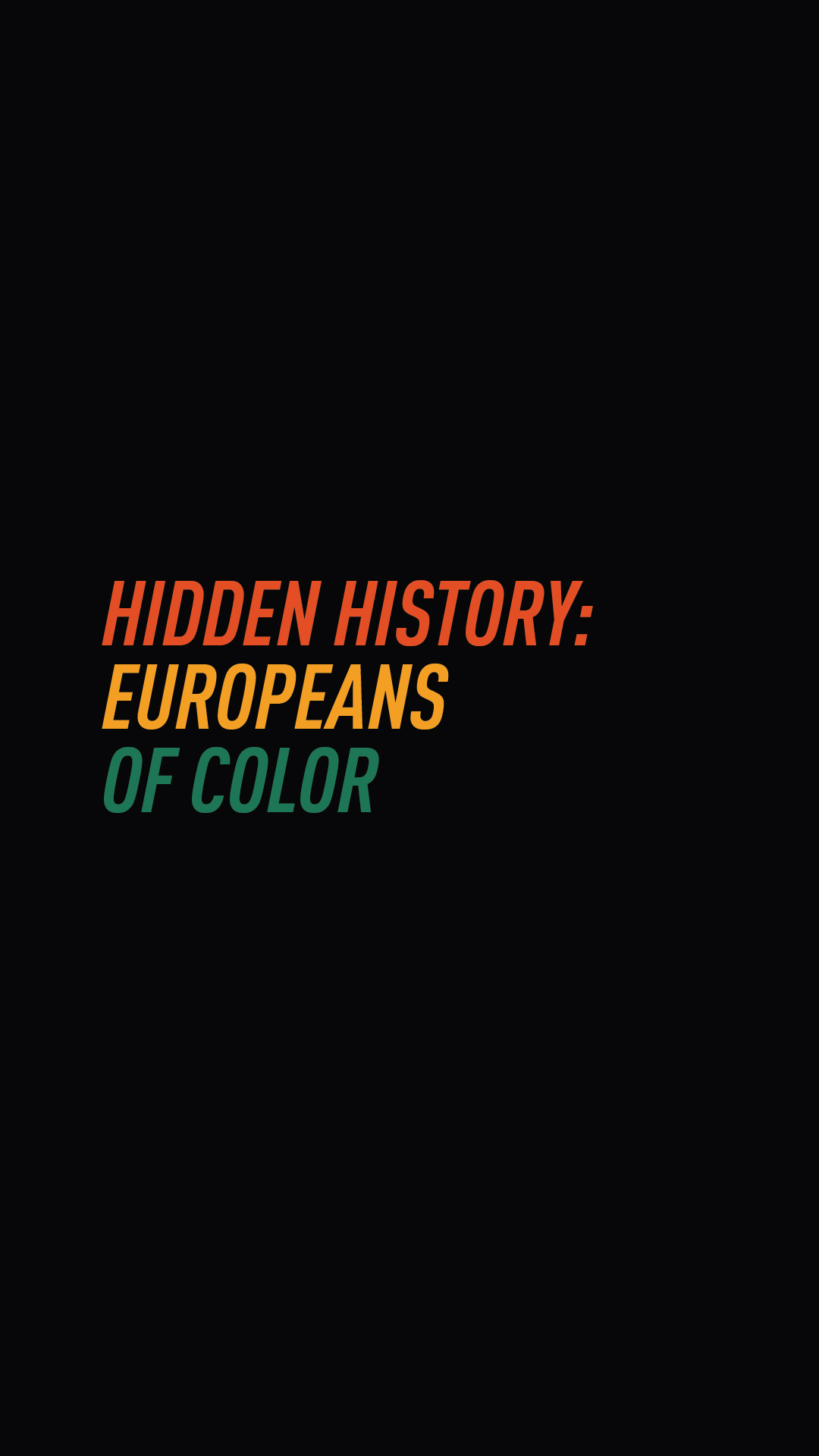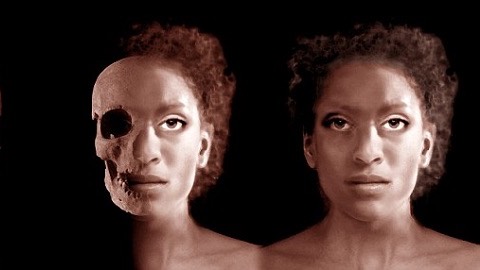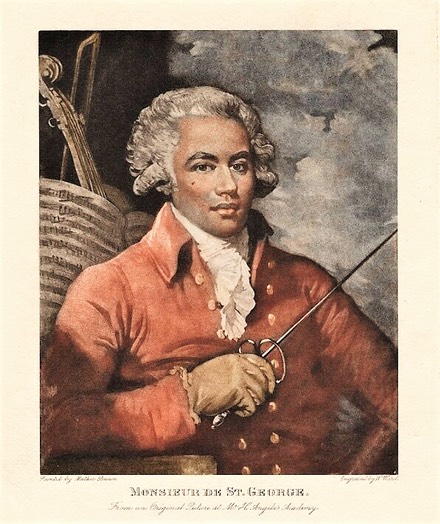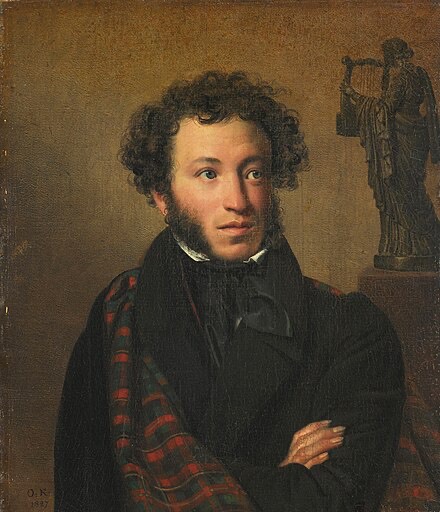01:50

The impact of Africans on Europe's cultural and political landscape has been remarkably significant, especially when considering the relatively small size of the Black populations dating back over centuries.
In the 16th century, there were an estimated 150,000 Black residents in the Iberian Peninsula. By the 18th century, their numbers were only a few thousand in France, the Netherlands, with several hundred scattered across Germany, Scandinavia, and Russia.
It was not until the 20th century that the combined Black population in Europe reached the hundreds of thousands. However, it is important to note that Europe's Black population can be dated back much further. In 1901, a skeleton was unearthed in York in the UK, eventually known as the 'Ivory Bangle Lady.' Radiocarbon dating placed her origins in the latter half of the 4th century AD.
In the 1950s, additional excavations in York found the largest collection of human skeletons from Roman Britain ever unearthed. Dating back to the 3rd century AD, this diverse group included individuals of African descent, representing a broad spectrum of society, ranging from soldiers to slaves.
This remarkable discovery suggests that the social makeup of Roman York was potentially more diverse than previously assumed.
Here are some of the accomplished Black Europeans who made their mark in a range of fields - from music to poetry, and sports to politics.

In 1901, a skeleton was unearthed in York, eventually known as the 'Ivory Bangle Lady.' Radiocarbon dating placed her origins in the latter half of the 4th century AD. /York Museum
In 1901, a skeleton was unearthed in York, eventually known as the 'Ivory Bangle Lady.' Radiocarbon dating placed her origins in the latter half of the 4th century AD. /York Museum
'Ivory Bangle Lady'
'Ivory Bangle Lady' is believed to be an aristocratic woman, who lived in the 4th century, but her remains were unearthed in York, England, in 1901. She was interred in a stone coffin and surrounded by valuable items like ivory bracelets, earrings, pendants, and other luxurious possessions, pointing to her considerable wealth and prestigious status within Roman York.
Isotope analysis of her remains indicated that she had spent her formative years in a warmer climate, while her skull's characteristics suggested a trace of North African ancestry.
Renaissance Europe's only Black Latinist
Juan Latino, who was born in 1518, in Ethiopia, was Europe's only Black Latin expert. He was also a scholar and author of the Renaissance Era. Latino was a Professor of Grammar and Latin language at the University of Granada, in Spain.
He released three collections of poetry during the mid-16th century, shedding light on the struggles faced by Black people and rejecting any justification for slavery of Africans. He was one of the early writers to employ a form of linguistic play called "signifying."
Abolitionist, 'Sons of Africa' founder
Olaudah Equiano was born in 1745, in Nigeria. He was kidnapped from his village of Essaka in modern southern Nigeria and enslaved at the age of 11. He was among 244 enslaved Africans who endured the transatlantic journey to Barbados in the West Indies. Eventually, he and a small group of other enslaved individuals were further dispatched for sale in the Colony of Virginia.
He worked as an explorer and merchant for 20 years. Equiano saved and bought his freedom for £40 ($10,633 today) through petty trading on the side, and wrote compellingly about his experiences in his memoir which was published in 1789 in London.
He was a founding member of the Sons of Africa, a group of 12 black men who campaigned for the abolition of slavery in Britain.

Joseph Bologne is known as the first Black classical composer. /National Portrait Gallery
Joseph Bologne is known as the first Black classical composer. /National Portrait Gallery
First Black classical composer
Joseph Bologne, Chevalier de Saint-George, was born in 1745, in the West Indies to a plantation owner and an enslaved Creole woman. He lived in the French capital Paris and fought for the Republic during the French Revolution and was the colonel of the first all-Black regiment in Europe.
He is best known as a violin virtuoso, who rose to become the conductor of the leading symphony orchestra at the Paris Opera and is known as the first Black classical composer.
The Count of Monte Cristo
Thomas-Alexander Dumas, born in 1762, in Saint-Domingue (now Haiti) to a French nobleman and an enslaved woman, was the first person of color to become a top army general in the French Army and played a key role in the French Revolutionary wars.
He lived in Paris and was the Inspiration for the Count of Monte Cristo, written by his son Alexandre Dumas.
READ MORE
Israel's 'localized ground raids' in Gaza
'Oriental': Is it racist?
What's it like to be Chinese growing up in the UK?
A musician who impressed Beethoven
George Augustus Polgreen Bridgetower was born in 1778, in Poland to a West Indian father and a Polish noblewoman. He lived in London, England, where as a virtuoso violinist he started performing at the esteemed Theatre Royal Drury Lane at the age of 10. His musical prowess impressed both Beethoven and King George IV - who directed his musical education.
He also performed in the Philharmonic Society of London's first season in 1813.
First Black 'transgender' sailor
William Brown, was a Black woman who served in the British Royal Navy in the early 19th century. Brown, born in the Caribbean island of Grenada, joined the British Royal Navy as a man in 1804 and served for 11 years and for some time as the captain of the foretop, which made her the most senior sailor on the front mast of a naval ship, in charge of the sails and rigging.
Brown was discharged from service on 19 June 1815 when it was discovered she was in fact female. The ship's register claimed she had only be onboard for three weeks before the discovery was made but an article in the The Times newspaper later that year claimed she had served for sometime in the Navy and her rank would have made it impossible for her to be a new recruit. Either way, she was the first known Black female to be enlisted in the British Navy.
A great fencing master
Jean-Louis Michel was born in 1785, in Saint-Domingue (now Haiti) to a Haitian mother and French father. He lived in Montpellier, France. His father was a fencing coach and Jean-Louis became one of the 19th century's greatest fencing masters.
He also served in the French army under Napoleon. On retirement, he opened a fencing school in Montpellier and his legacy lives on through the New Zealand fencing club which opened in 1955.

Alexander Pushkin was a published poet at the age of 15. /Portrait by Orest Kiprensky
Alexander Pushkin was a published poet at the age of 15. /Portrait by Orest Kiprensky
Founder of modern Russian literature
Alexander Pushkin was born in 1799 in Moscow, Russia. A poet, playwright, and novelist from the Romantic era in Russia, he is widely acknowledged as both the most prominent Russian poet and the architect of contemporary Russian literature.
He was a published poet at the age of 15. Pushkin's great-grandfather was Abram Petrovich Gannibal, an African page who was abducted and presented as a gift to the Ottoman Sultan in Constantinople. He was later sent to Russia as a gift for Peter the Great.
Prominent nurse and healer
Mary Seacole was born in 1805, in Jamaica to a Scottish army officer and a Creole mother who ran a boarding house and was a traditional herbalist. She learnt traditional healing skills, which she combined with her expertise in Western medicine to become an accomplished nurse.
She fought cholera and yellow fever in her homeland. From 1854, she nursed in London where she raised funds to travel to Crimea, where she set up a facility to treat wounded British soldiers during the Crimean War
She was awarded the Jamaican Order of Merit in 1990 and was voted the greatest Black Briton in a BBC poll in 2004.
First Black mayor in London
John Richard Archer, was born in 1863, in Liverpool, England to an Irish mother and Bajian father. Archer was a prominent British politician and political activist. He was elected Mayor of Battersea in 1913, becoming the first Black mayor of a borough in London.
He was a notable Pan-Africanist and the founding president of the African Progress Union. In 2013, he was one of six people selected for the 'Great Britons' postage stamp series.

Subscribe to Storyboard: A weekly newsletter bringing you the best of CGTN every Friday